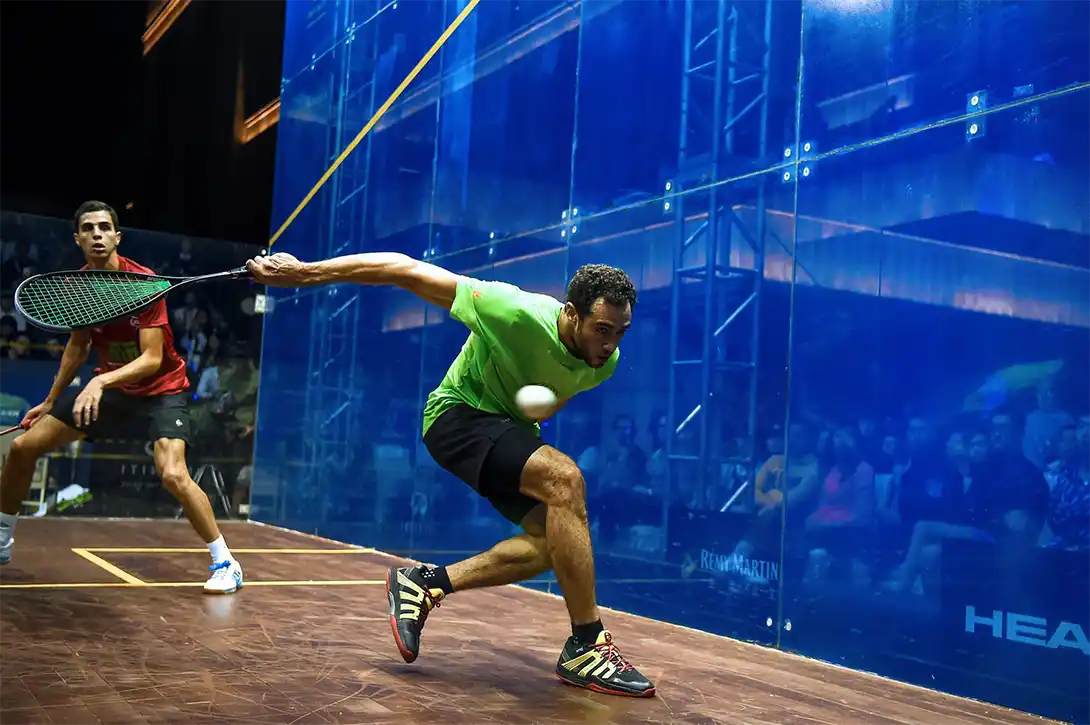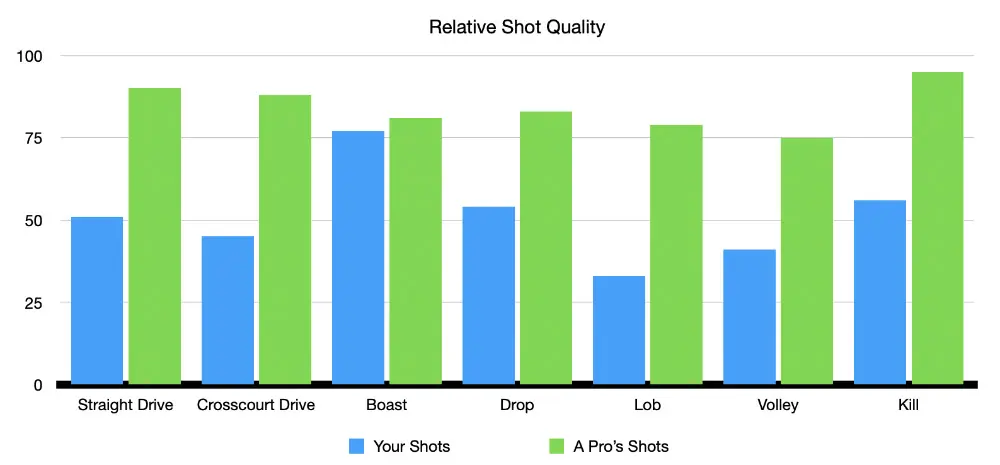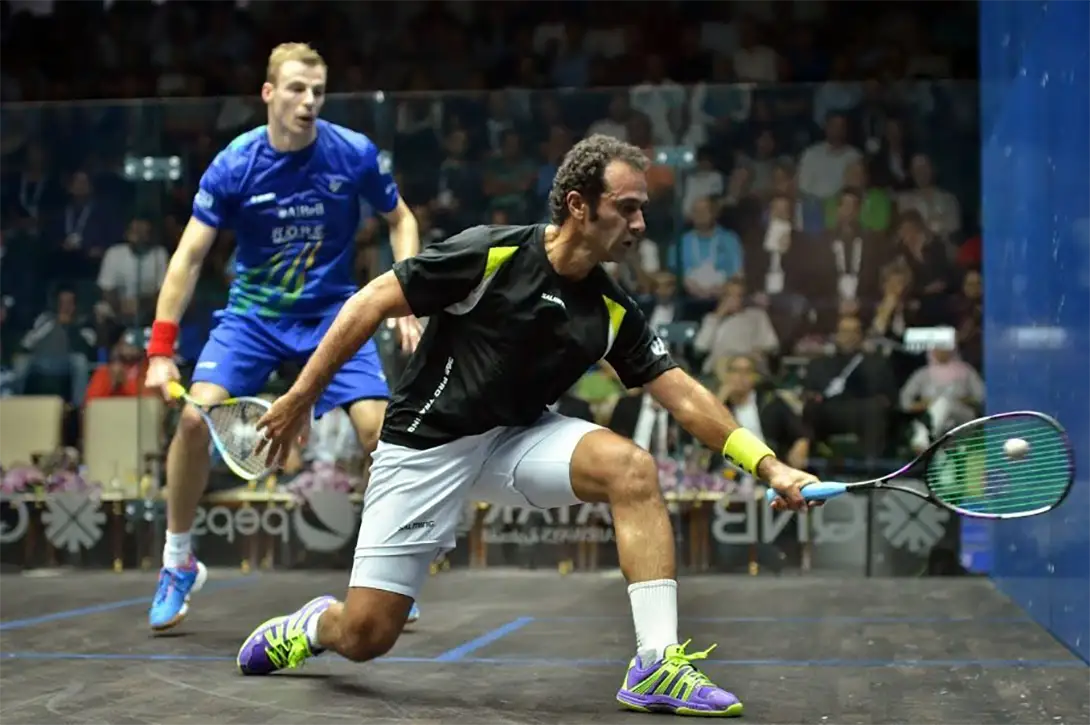02 November 2022 / 3-Min Read / Translate
To be clear, I’m not saying that you can’t have a great drop if you have terrible lengths. I’m saying that your great drop won’t be as effective as it could be unless you can also hit great deep drives. If you look at each individual shot and assess its effectiveness, you miss the fact that you don’t play individual shots in a rally – you play a variety of shots and their combination is what makes each and every rally different.

Not a drop shot, but I bet it's a great shot.
Over the years, I have worked with a few players who became obsessed with certain shots; some with their short game, others with the length game. In both situations, not addressing all parts of their game meant that their game was unbalanced and ultimately less effective than it could have been. It’s easy to fixate on one aspect thinking this is your weakness when in fact you might need to take a more holistic approach.
One last point before we look at some examples. I am not saying that you can’t develop a “signature” shot in your game, you can. I’m saying that its importance is relative to the other shots. Look at the chart below. I freely admit I invented the scores to make my point. Notice how the pros (green) have the same score for each shot except the kill. In this case, that’s their signature shot. Now look at your shots’ scores (blue). See how they vary much more.

Not a drop shot, but I bet it's a great shot.
In this example, your signature shot is the boast, but because the other shots all vary so much in quality, that shot is less effective. Another way to put it is “you are only as good as your worst shot“, although that’s not necessarily true.
Let’s start with some simple examples. You have a good straight drive – you can get it to the back corners and it’s quite tight. However, you find your opponents volley your straight drives more than you would like. You are confused because you know your straight drive is better than most of the people you play against. So what is go0ing on? Well, the chances are you have a mediocre crosscourt and/or boast.
Your opponents are either consciously or even subconsciously aware of this and edge across just slightly to the sidewall with the intention of volleying your shot. if you do hit a crosscourt or boast they feel comfortable in being able to reach it. Your boast or crosscourt might not be terrible, but it’s a better tactic to attempt to play a. volley off your straight drive than it is to cover every shot evenly.
The solution? To improve your crosscourts and boasts, or play your straight drive less for a few weeks, just to ensure your opponents aren’t anticipating that crosscourt. I’e seen players attempt to improve their straight drive in the belief it wasn’t good enough and it’s easy to fall into this trap because so much of the pros’ squash is straight and coaches like me keep talking about the “straight drive being the framework of a great game“, and I stand by that, but it has to be relative to other shots.

Being good at everything is better than being great at one shot and terrible at the rest.
Your nickname in the club where you play is “The Attacker”. You are able to hit deft drops, beautifully dying boasts and spectacular crosscourt nicks. Yet you still get beaten. How is that possible? Some people say you attacking game is as impressive as the pros. over time, you start to play more adventurous shots in an attempt to extend the court area where you can hit winners, but of course it’s not that easy. Your winning percentage might drop and you become disheartened.
I’m sure you can see what I am getting it. Your deep game is not as good as it should be. Your attacking game is masking your weakness. Because you are able to hit some amazing winners, you neglect to see the basic fundamentals as the foundation of an attacking game. Who wants to hit boring shots to the back, when you can smack some nicks?
You fail to see that you might be able to hit more effective short shots by pushing your opponent into the corner. There might also be an element of fitness involved and that’s why you don’t really like longer rallies. Whatever the reason, if you don’t improve your length game, you’ll always be a “hit or miss” type of player.
Like my chart, I freely admit that my real world examples are a little simplistic. The real world is never than black and white, that’s one of the aspects of sport that make it interesting. There’s also the ebb and flow of day-to-day effectiveness that often clouds the assessment, leading to wasted training.
My objective with this article is to get you into the frame of mind to assess your shots in relation to your other shots. Perhaps I should have titled this article “No Shot Is An Island” in allusion to the English phrase “No Man Is An Island”, meaning No one is self-sufficient; everyone relies on others. And no shot is sufficient, they each rely on the quality of other shots.